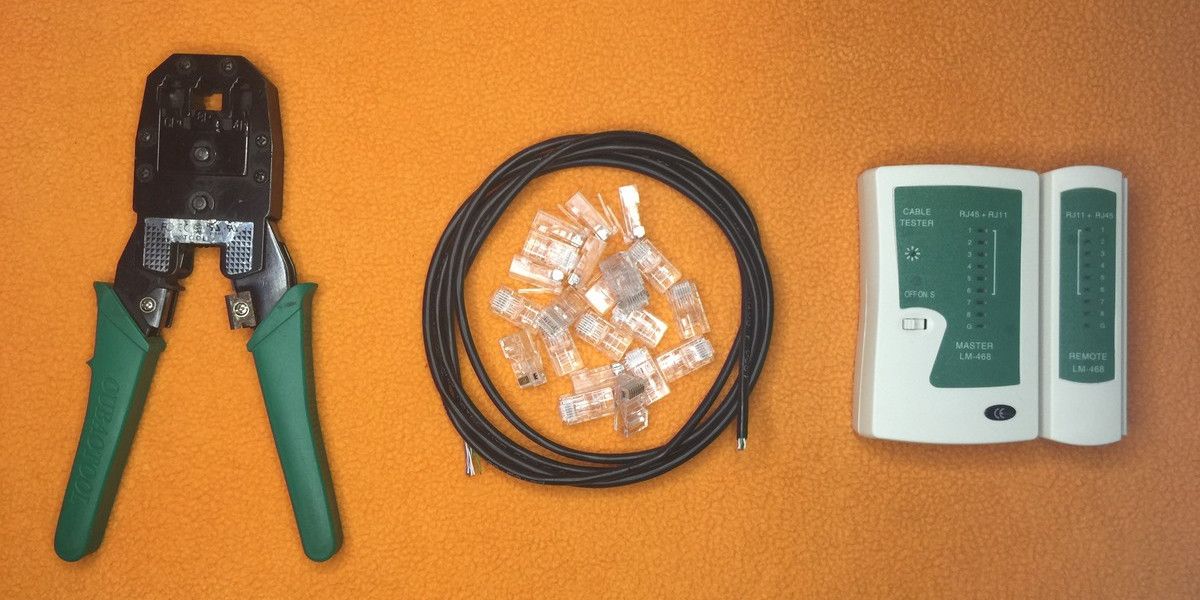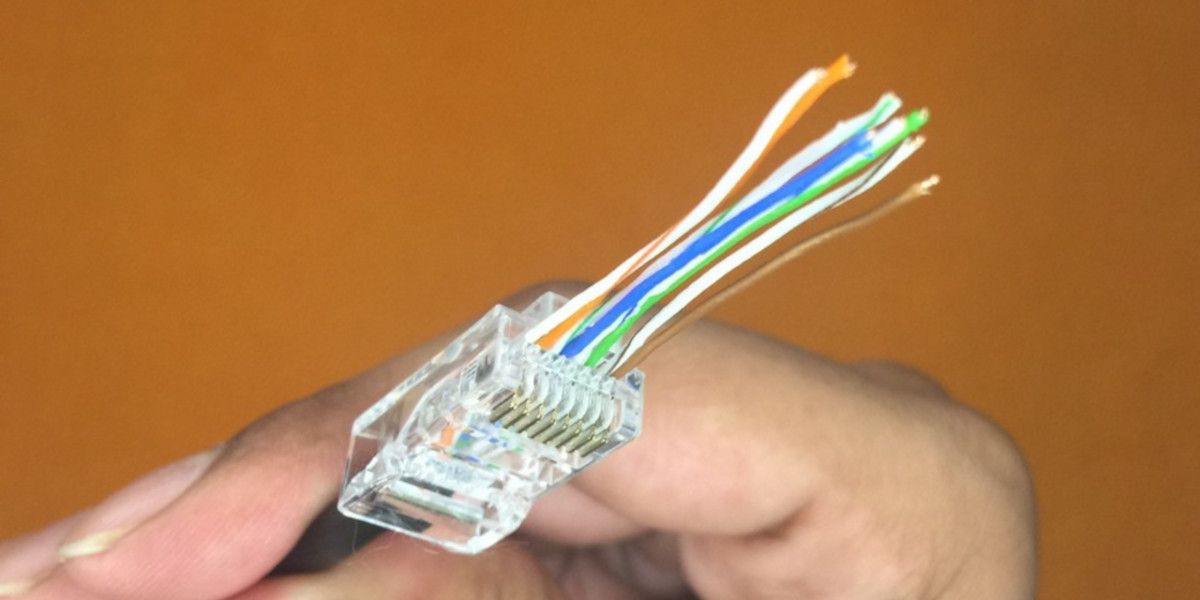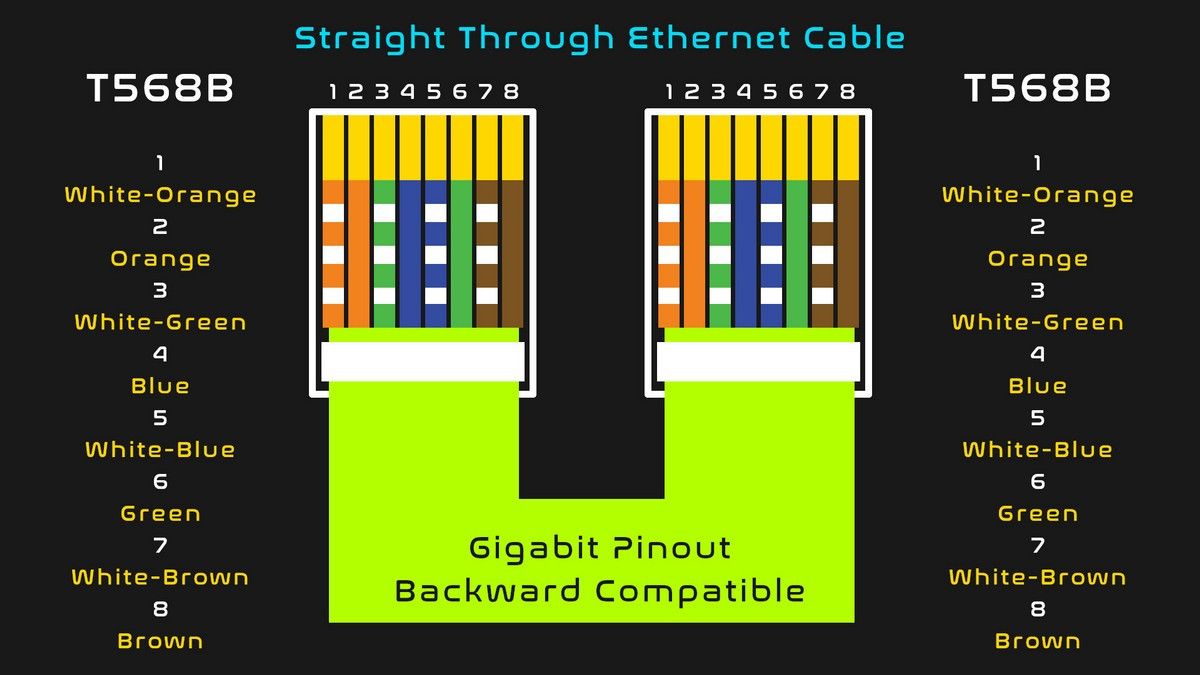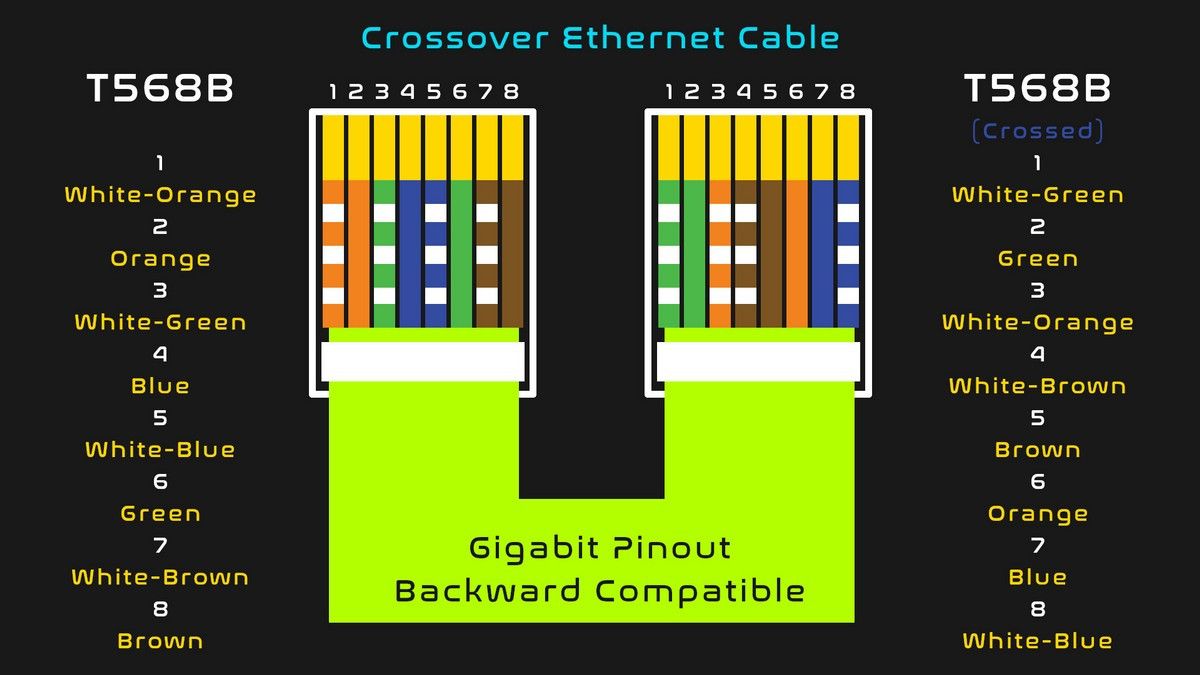Speed is why you want to use a wired network; using the right wiring is key for a fast network. Using the right tools and correct pinout diagrams, your home network can be set up quickly for years of trouble-free operation.
With a wired network, you get higher bandwidth than a wireless network and lower latency, which you will love when playing online games or transferring large files.
What Tools Do You Need to Wire an Ethernet Cable?
To start, you need a good quality cable. We need to keep the future bandwidth demands in mind. Hence, opting for an Ethernet cable like Cat6A that supports 10 Gbps is better. If you want to keep the costs low, you can choose Cat6 or Cat5e, which support up to 1 Gbps. Older Cat 5 cables are no good, as 100 Mbps is effectively obsolete and certainly not future-proof.
The wiring for each Ethernet cable is the same. Furthermore, making your own cables requires a few tools, most of which are generally available and inexpensive.
RJ45 connectors must be crimped at both ends of the Ethernet wire. You can choose pass-through jacks for ease and reliable crimping. You need a crimping tool to fix the jacks to the individual wires inside the Ethernet cable. Get one that has a wire stripper and a cutter built in.
Also, you need an Ethernet cable tester. It is a portable battery-powered device that shows the connection status of each wire. It does so by glowing the respective LEDs.
Should You Use 100 Mbps or Gigabit Wiring?
Cat5 100 Mbps Ethernet requires only two pairs of wires, whereas gigabit Ethernet needs all four pairs. No matter which router or switch you are using currently, wire the cable for gigabit. Gigabit Ethernet is faster, and gigabit pinouts are backward compatible with 100 Mbps.
Straight Through Cat5e Wiring Diagram
You can connect the computer to the router or a switch using a straight-through cable. T568B is the most popular standard used for straight-through LAN cables. The Ethernet cable wire order is shown in the picture below, with the pins facing you and the retention clip pointed away. Both pins have the same layout and are hence called straight-through.
Crossover Cat5e Wiring Diagram
Crossover cables can connect a computer’s Ethernet card to another without any networking equipment. Inside the cable, the wires connect the Transmit (TX) pins directly to the Receive (RX) pins and vice versa, in a cross fashion and hence the name.
Most of the latest network cards are auto-sensing. They can self-configure to get crossover functionality even on straight-through cables. But legacy network cards still rely on crossover cables for communication. The picture shows the pinout of the crossover cable. One of the pins is a T568B standard; the wiring of the other pin is different to achieve the crossover.
Networking Right Has Its Perks
A wired network is always faster than a wireless network. Also, it is much desired when moving huge amounts of data across different devices, which is often the case. However, quality cable, good crimping, and thorough testing are all it takes to set up your network once and for good. After that, your wired network will quietly do its job for many years.





